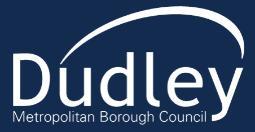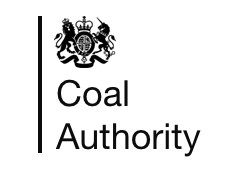
Welcome to the Construction Futures
Construction Futures is an underpinning research theme within the School of Architecture and Built Environment. The research in this area cuts across all of the School disciplines including Architecture, Built Environment, Civil Engineering and Geography.
Our work shapes and informs decisions, policy and practice, and enhances societal impact globally. Our research findings have led to change in organisational practice, information management systems, and the development of Smart Cities. Going forward, we will build on this to develop safe and sustainable improvement to the Built Environment.
Self-funded PhD Projects
To apply for one of the self-funded PhD projects listed below, please complete the PhD Postgraduate research in Built Environment course application form by clicking on Apply Now: https://www.wlv.ac.uk/courses/phd-postgraduate-research-in-built-environment/
Postgraduate research in Built Environment Self-funded Projects
Click here
Project details
The project (AJUST) aims to improve the conceptual understanding of the just transitions, and the accelerating sustainability transitions through community engagement and reducing socio-technical inequalities (Sovacool et al, 2021; Sovacool & Dunalp, 2022). It focuses on identifying distinct modalities of local engagement looking particularly at the decentralised solar energy technologies/strategies used by local communities to promote more equitable and decentralized decision-making processes. Importantly, AJUST aims to improve the conceptual understanding of the distributional inequalities, power imbalances, and the unintended impacts of sustainability transitions (Avelino, 2021). The project takes the perspective that the local communities should not be seen as always vulnerable but also as empowered resilient actors. The local communities use their adaptive capacities to seek solutions that support their interests both within and outside the formal institutional structures and decision-making process (e.g., Dannevig & Dale, 2018).
The project takes a holistic and interdisciplinary perspective by drawing upon insights from the field of sustainability transitions, innovation studies, Science, Technology and Society (STS), Human Geography, anthropology, institutional theory, policy and governance studies, and energy law. Empirically, the project focuses on understanding the development of decentralised solar energy projects in Asia and Africa and how those projects contribute to just transitions.
The primary objective is to develop novel conceptual insights for accelerating just transitions through addressing the power imbalances and engagement of local communities during the acceleration phase of decentalised solar energy in Asia and Africa.
Secondary objectives:
- Identify the unintended effects of socio-technical transitions and improve the conceptual understanding of just transitions by synthesizing insights from different bodies of energy justice literature.
- Analyse the different institutional strategies and legitimation narratives utilized by different actors engaged in the transition process.
- Examine the empowerment strategies of the local communities that support inclusive sustainability transitions
- Examine the distributive and participatory outcomes of decentralised solar energy projects in Asia and Africa.
The project utilises a qualitative case study approach and draws upon different sources of data such as semi structured interviews with industry, policy, and civil society representatives, focus group interviews, and participant observations. The project draws upon the analysis of archival data such as policy documents, records of public consultations, data available on social media sites, published scientific articles, media analysis of the national and regional print and online newspapers, and an analysis of the public records of the important court hearings and debates, etc. For empirical research, the project focuses on specific regions (e.g. South Africa, Nigeria, India, Indonesia, Brazil) and localities where there are ongoing and upcoming decentralised solar energy projects. The project improves the existing conceptual approaches in the field of sustainability transitions for bringing in greater sensitivity to the emergent failures involved in the transition process and developing novel knowledge on accelerating just transitions through renewable energy projects.The project will develop novel inclusive governance models that will help the policymakers and the industry understand and address the benefits and risks associated with upcoming solar energy projects.
Supervisory Team
Dr Komali Yenneti and Dr Louis Gyoh
For more information: For an informal discussion please email Dr Komali Yenneti - komaliy@wlv.ac.uk
Project details
Since the 1980s, an international movement developed that aimed to provide ‘new ways of thinking’ about Gender equality. This agenda focused on enabling elimination of discrimination against women in education and work-place (e.g., Athena Swan in the UK) led to gender equality becoming an international buzzword (Global Campaign for Education, 2012; Barnard 2017). Gender equality in many countries has been influenced by numerous international conventions and declarations in the past 30 years (Shah 2020). Yet gender inequality is widespread across certain societies and more pronounced in certain sectors such as: leadership positions and tertiary education in STEM and other underrepresented subjects (Casad et al., 2021). Cultural and societal norms in developing countries, for example, South and East Asia, sub-Saharan Africa, Middle East and North Africa societies worsen gender disparity, and increases barriers like limited education, discriminatory laws, early marriages, and traditional gender roles (Jayachandran 2015). The underrepresentation of women in higher education leadership restricts the access to female role models for early career academics, discourages young women from pursuing careers in higher education, impedes opportunities for research partnerships, perpetuates gender stereotypes and biased decision-making, potential for diverse perspectives and innovation, reduces ‘bargaining power’ of intended aspirations and career choices, and further reinforce gender inequalities in tertiary education environment (Ballenger 2010; Madera 2017).
Set against this background, the key objectives of this proposed project are to:
- Investigate the situated constructions and conceptualisations of diversity and gender equality in built environment.
- Explore the drivers, opportunities, and challenges that impact diversity in leadership and female academics’ progression to leadership positions in built environment.
- Develop an evidence on gender equality in built environment and propose recommendations to improve diversity, leadership and outcomes in built environment in developing countries.
This study focuses on built environment subject within the higher education as it is often identified as one of the most male-dominated sectors around the world (Adeyemi et al., 2016; Bryce et al., 2019). Built environment refers to a group of sectors that ‘facilitate the creation and continuity of the built environment, including policy, planning, procurement, design, development, construction, and maintenance’ (Lawlor 2021, p. 6). The scope of the educational leader in this study could include Professor, Head of a Department or School, Dean, and other decision-making.
The project will employ a mixed mode data collection strategy to reach a wide spectrum of female leaders working in a variety of roles in higher education within the built environment subject. This approach will provide an opportunity to further investigate the personal experiences of a selected group of individuals and explore the relationship between diversity and leadership. The development process of the data collection instruments thoroughly considers social, cultural, language and regional practices. Ethics will be thoroughly considered in planning the data collection methods and approval will be sought from the university and respondents.
This project would positively impact gender diversity and representation of women in leadership roles in higher education by highlighting the knowledge and experiences of both female leaders and early career academics in higher education.
Supervisory Team
Dr Komali Yenneti and Dr Louis Gyoh
For more information: For an informal discussion please email Dr Komali Yenneti - komaliy@wlv.ac.uk
Project details
Grit comprises inorganic materials such as sand, gravel, broken glass, eggshells, and other minerals with a settling velocity significantly higher than that of organic material in wastewater. It enters the wastewater stream from various sources, typically through surface run-off from roads via the combined sewer system in the UK. The removal of grit is essential to safeguard mechanical equipment from abrasion and wear, prevent the accumulation of deposits in pipelines and channels, and reduce the frequency of digester cleaning required due to accumulated grit. Additionally, a secondary yet highly desirable objective of the grit removal system is to separate grit from organic material in the wastewater. This separation enables subsequent treatment processes to focus more effectively on treating organic material.
The existing grit removal systems comprise traditional gravity settlement chambers situated at the inlet of treatment plants, constituting an essential component of the preliminary treatment process. Other methods include filtration, physical separation, and the application of specialised spiral settlement tanks.
The existing treatment process fails to effectively remove the smallest targeted particles, resulting in the persistence of grit in subsequent downstream stages, including primary settlement, biological treatment, and secondary settlement. This presence of grit significantly hampers the efficiency of biological processes and contributes to increased abrasion and wear on mechanical equipment. As a result, more frequent maintenance and cleaning procedures are required to improve efficiency, placing substantial financial pressure on water companies and local authorities.
The primary aim of this study is to evaluate the effectiveness of existing grit removal systems in wastewater treatment within the UK, and to investigate and devise novel approaches to enhance and optimise the process.
The research objectives are outlined below in order to achieve the primary goal:
- Gain understanding of the existing grit removal processes within the UK wastewater treatment sector.
- Understanding the composition of grit and its particle size distribution
- Evaluating the efficiency of current systems for grit removal.
- Quantifying the damages resulting from insufficient grit removal and assessing the financial resources required to manage these consequences.
- Developing innovative approaches for grit removal or enhancing existing techniques through the use of specialised CFD modelling software such as Ansys Fluent
- Constructing and testing a physical prototype for grit removal, informed by the outcomes of the software modelling.
The research methodology comprises conducting thorough literature reviews, visiting sites, meeting specialists, collecting wastewater and grit samples from multiple local and national treatment plants, performing analytical tests, using CFD modelling, and constructing physical models.
Supervisory Team
Dr Alaa Hamood, Principal Lecturer and Head of the Civil Engineering Department
Dr Julia Zakharova, Senior Lecturer in Civil Engineering
For more information: For an informal discussion please email Dr Alaa Hamood - a.hamood@wlv.ac.uk
Project details
The risky, complex and fast-paced nature of construction contributes to high levels of stress amongst construction workers who use different ways to cope. A supportive and guided approach is needed and this PhD study will investigate how construction workers currently cope with stress and go on to map these against theory. This will lead to the development of a framework that will guide managers and employers to help their workers cope better with stress.
A qualitative study involving interviews and case studies will be carried out using standard analytical techniques pertaining to qualitative data.
Outputs will include the development of a framework, guidelines and manuscripts for Journal publications (3 No) and presentation at Conferences (2 No).
Supervisory Team
Dr Ezekiel Chinyio (Reader in Construction Management)
Dr Paul Hampton (Head, School of Architecture and Built Environment)
For more information: For an informal discussion please email Dr Ezekiel Chinyio - E.Chinyio@wlv.ac.uk
Project details
About the Project: In the UK and Internationally, the number of built heritage assets are increasingly at risk. Maintaining and managing these assets is critical to our cultural heritage and whilst we have seen moves towards using digital tools and approaches, such as HBIM, to better manage these, there is still much work to do to. This project will focus on strategically integrating multiple digital technologies to support management of built heritage assets.
This project will look to develop a framework for the implementation of emerging digital tools, including Artificial Intelligence, based analysis of heritage buildings to formulate more appropriate and optimised strategies for digital data capture and heritage management. The research will utilise a Design Science based research approach to develop and implement a novel framework to support technology adoption and application. The project will involve working with technologies within the School and the National Brownfield Institute and a select number of industry collaborators.
Supervisory Team
Prof David Heesom, Dr Mo Tammo and Dr Nigel Moore
For more information: For an informal discussion please email Prof David Heesom -d.heesom@wlv.ac.uk
Project details
About the Project: As the construction industry becomes more digitally enabled through the application of BIM, the concept of the Digital Twin has emerged and been defined as “The virtual representation of a physical object or system across its life-cycle…using real-time data and other sources to enable learning, reasoning, and dynamically recalibrating for improved decision making” (IBM, 2020).
Digital Twins are often used as a tool for lifecycle and asset management, however there is potential to apply the concepts to construction based activities as the project progresses and activities on site evolve. As site based activities are becoming more digitally enabled and monitored, this project will seek to develop a digital twin that evolves during CAPEX / construction phases by integrating 4D BIM with the digital twin concepts and artificial intelligence. This will lay the foundation to more effective project delivery and will provide a new evolutionary approach to the implementation of digital twin through site-based activities which can be used to better plan and manage activities.
The project will implement a Design Science Research based approach as it will seek to full understand contemporary issues in site management and develop the framework for an effective technology based solution.
Supervisory Team
Prof David Heesom, Dr Nigel Moore and Dr Emmanuel Daniel
For more information: For an informal discussion please email Prof David Heesom - d.heesom@wlv.ac.uk
Project details
In recent years, there has been growing concern over buildings' impact on the environment, particularly in the UK, where the construction and operation of buildings account for around 40% of the country's total carbon emissions. This has led to a push for more sustainable and energy-efficient buildings to achieve net zero emissions. With the increasing focus on sustainable development and reducing carbon emissions, retrofitting for energy efficiency in buildings has become a crucial topic in the construction industry. Retrofitting involves improving existing structures to make them more energy-efficient, reducing their environmental impact and lowering operating costs for building owners. However, retrofitting can be complex, time-consuming, and costly, leading to a need for more efficient and practical approaches.
Lean construction focuses on eliminating waste and maximising efficiency in the building process. In contrast, offsite construction involves prefabricating building components in a factory and assembling them on-site, reducing the need for on-site construction activities. These techniques have already been successfully applied in new projects, but their potential in building retrofitting for net zero emissions has not been extensively explored.
Despite the potential benefits of lean and offsite construction in project delivery, there is a lack of research and understanding on how these techniques can be applied explicitly in retrofitting. There is also a lack of a comprehensive framework that outlines the specific steps for implementing lean and offsite techniques in building retrofitting for net zero emissions. While lean and offsite construction has been widely implemented in new construction projects, their application to retrofitting for energy efficiency has not been extensively explored.
This research aims to bridge this gap and provide insights into the potential of implementing lean and offsite construction in retrofitting projects for energy efficiency. It will also develop a model to support stakeholders in the implementation, ultimately contributing to more sustainable and efficient retrofit project delivery in the UK.
Multiple research methods will be adopted to achieve the study's aim. These would be both qualitative and quantitative approaches. Case studies, interviews, and surveys with industry experts, practitioners, and stakeholders will be used to gain valuable insights.
Supervisory Team
Dr Emmanuel Daniel, Dr Louis Gyoh, Prof Subashini Suresh and Prof David Heesom
For more information: For an informal discussion, please email Dr Emmanuel Daniel - e.daniel2@wlv.ac.uk
Project details
The construction industry is a vital sector contributing to the global economy. However, it also faces numerous challenges, including organisational failure. Offsite construction, also known as modular, prefabricated, or modern construction methods, has gained popularity, particularly in the UK. This method involves building structures away from the site, and its appeal lies in its potential to improve construction efficiency, reduce costs, and minimise waste and environmental impacts. Despite these benefits, offsite construction businesses face unique challenges, such as supply chain disruptions, lack of clear legal framework, shortage of skilled labour, and high upfront costs, resulting in organisational failures. Several offsite construction businesses have gone bankrupt in the UK in recent years, highlighting the need to develop a sustainable business model to prevent such failures.
One central concern is the lack of focus on creating sustainable business models for offsite construction businesses. Existing research primarily focuses on the technical aspects of offsite construction and neglects the importance of a sustainable business model that addresses legal issues. This research gap highlights the need for a study addressing the challenges faced by offsite construction businesses and providing a sustainable business model. While there are studies on sustainable business models in other sectors, a targeted approach is necessary to consider the unique challenges and opportunities in the offsite construction sector. This study aims to bridge this gap by providing insights and recommendations for developing a sustainable business model that promotes the success and growth of the offsite construction sector in the UK while addressing pertinent legal issues such as design liability, insuring the supply chain, insolvency in the supply chain and the application of the Housing Grants, Construction and Regeneration Act 1996.
By identifying and addressing these companies' challenges, this study can contribute to offsite construction's long-term viability and competitiveness in the industry. The findings can also offer valuable insights for policymakers and industry stakeholders to promote the growth of offsite construction.
A mixed-methods approach will be used to gather and analyse data, including qualitative research methods like interviews and focus groups with industry experts such as construction company managers and supply chain partners. This approach will provide a deeper understanding of the challenges faced and how existing business models address them. Quantitative data from financial statements, industry reports, and legal reports will also be analysed to identify successful business models and their impact on company performance.
Supervisory Team
Dr Emmanuel Daniel, Prof Issaka Ndekugri and Dr Ezekiel Chinyio
For more information: For an informal discussion, please contact via direct email to Dr Emmanuel Daniel - e.daniel2@wlv.ac.uk
Project details
Regenerating brownfield sites for housing and infrastructure development in the UK is critical and timely, as the country faces a housing crisis and needs sustainable urban development. Brownfield sites, which are abandoned or underused areas of land that have the potential for redevelopment, can provide much-needed housing and infrastructure to support the growing population in the UK. The regeneration of brownfield sites for housing and infrastructure development has become an increasingly important issue in the UK, as the demand for housing continues to rise and available land for development becomes scarce. However, there is a lack of understanding and consensus on the social value of regenerating these sites, a significant gap in current research.
Previous studies have primarily focused on the economic benefits of brownfield redevelopment, such as increased property value. While these are essential aspects, the social impact of regenerating these sites has not been explored. This gap in research leaves policymakers and developers with limited information and guidance on prioritising and implementing brownfield redevelopment projects effectively. Moreover, the concept of social value is multidimensional and can include factors such as improving the quality of life, promoting community cohesion, and addressing environmental concerns. Therefore, understanding the social value of brownfield regeneration is crucial for creating sustainable and inclusive communities in the UK.
This study aims to fill this research gap by exploring the social value of regenerating brownfield sites for housing and infrastructure development in the UK. Understanding the social value of regenerating brownfield sites for housing development is crucial for informing decision-making processes and policies related to land use and sustainable development. By examining the potential social benefits and challenges of brownfield site regeneration and developing a framework, this study aims to contribute to the ongoing discussions and debates surrounding housing and infrastructure development in the UK. Multiple research methods will be adopted to achieve the research aim.
Supervisory Team
Dr Emmanuel Daniel, Prof Chaminda Pathirage, Dr Paul Hampton and Dr Hamid Pouran
For more information: For an informal discussion, please email Dr Emmanuel Daniel - e.daniel2@wlv.ac.uk
Project details
The construction industry has been identified as the most energy-intensive and wasteful sector and to address these challenges, the sector must transition from a linear to a circular economy bringing about change in perceptions.
As the move towards a circular approach gathers pace, it is critical to develop innovative solutions that can help reduce energy consumption, minimise waste generation, and promote sustainable practices in the construction sector. By adopting more sustainable and eco-friendly practices, the construction industry can mitigate its impact on the environment and contribute to the achievement of global sustainability goals. Circular economy, for instance, has become an essential approach to achieving innovative sustainable architecture. It emphasises reusing, repairing, refurbishing, remanufacturing, and recycling materials and products throughout their lifecycle, promoting the use of eco-friendly and renewable resources. With adaptable, durable, and disassembled buildings, architects can create structures that not only benefit the environment but also provide economic and social benefits.
The overarching aim of the research is to identify new innovative approaches to sustainable architecture using circular economy principles. By analysing material flows and carbon emissions, architectural designers can establish more locally focused circular economy representations and identify key activities for circular practices. This holistic approach can serve as a model for the transition towards a more sustainable and resilient architecture.
The methodology employed in this research will be design-driven to evaluate current design processes, investigate the creation of materials banks, design by layers, design for adaptability, and design for optimisation. The research will delve into the theoretical underpinnings of a circular economy and examine its practical application to sustainable building practices.
The outcome will be a range of actionable tools and methods for instilling circular thinking into architectural design, leading to new circular buildings that incorporate renewable raw materials and technologies.
In summary, architects and urban planners can significantly contribute to the creation of sustainable, efficient, and adaptable built environments by adopting and integrating the principles of the circular economy in design processes and architectural thinking.
Supervisory Team
Dr Mohammad Tammo Senior Lecturer, Dr David Heesom Professor, Dr Nigel Moore Lecturer, Olive White Senior Lecturer
For more information: For an informal discussion please email Dr Mohammad Tammo - M.Tammo@wlv.ac.uk
Explore Construction Futures

Brownfield Research and Innovation Centre (BRIC)

Environmental Technologies and Resource Efficiency Support Service (EnTRESS)

Spatial and Transport Planning for a new Mobility Era (HARMONY)

Multi-source Big Data Fusion Driven Proactivity for Intelligent Mobility (OPTIMUM)

STELLAR

End-to-End Approach for Mobility-as-a-Service tools, business models, enabling framework and evidence for European seamless mobility, (MaaS4EU)

Impact in Development

DESIRE Project

SaVe Project
Discover More
Our Partners:














/prod01/wlvacuk/media/departments/digital-content-and-communications/images-2024/240328-Varsity-Line-Up-Resized.jpg)
/prod01/wlvacuk/media/departments/digital-content-and-communications/images-18-19/220325-Engineers_teach_thumbail.jpg)
/prod01/wlvacuk/media/departments/digital-content-and-communications/images-18-19/240509-Bat-Research-Resized.jpg)
/prod01/wlvacuk/media/departments/digital-content-and-communications/images-2024/240320-Uzbekistan-Resized.jpg)
/prod01/wlvacuk/media/departments/digital-content-and-communications/images-2024/240229-The-Link-Resized.jpg)
/prod01/wlvacuk/media/departments/digital-content-and-communications/images-18-19/240509-Deaffest-Graphic-Resized.jpg)



